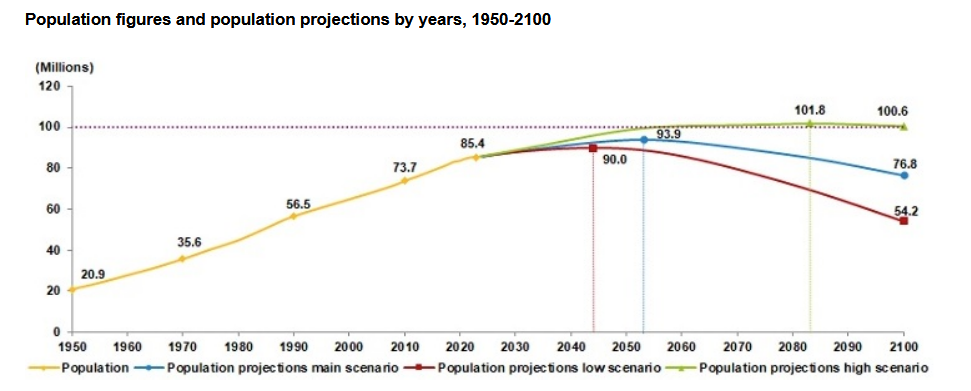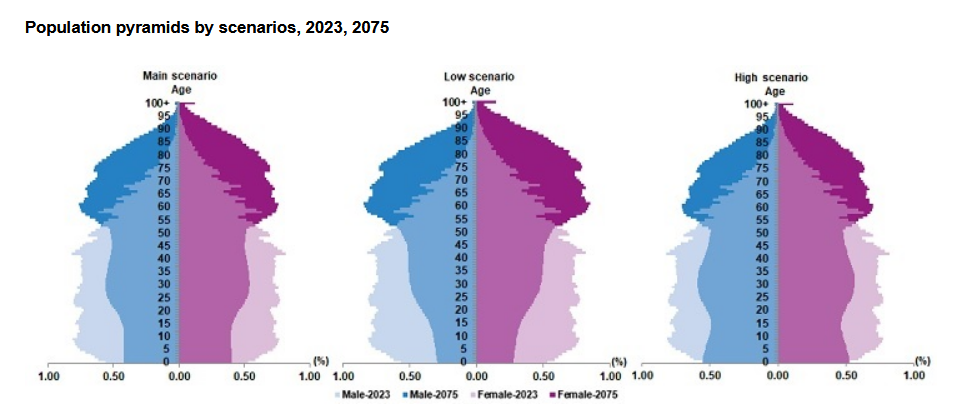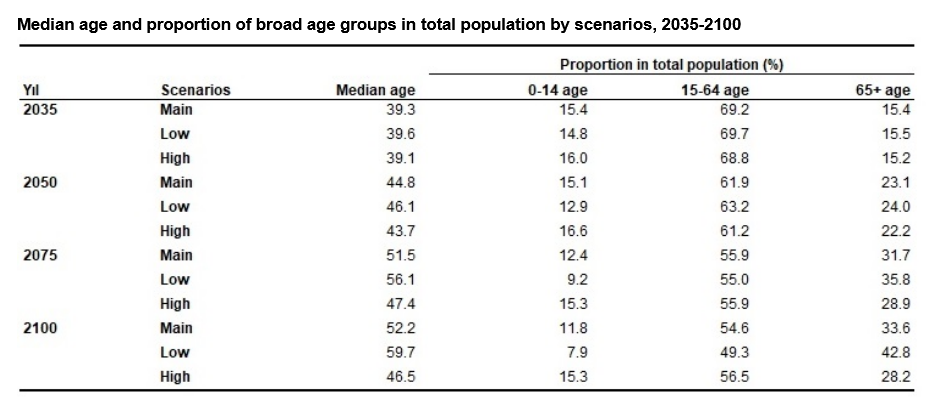TurkStat – Turkey’s population is expected to fall below 77 million in 2100
Istanbul, July 30 (Hibya) – Turkey’s population is expected to increase until the mid-2050s and then begin to decline, falling below 77 million by 2100, according to the Turkish Statistical Institute (TurkStat).
Due to the needs resulting from the changes in Türkiye's population structure in recent years, population projections were renewed based on the results of the 2023 Address Based Population Registration System (ABPRS) following the Turkish Statistical Institute's revision policy.
In this press release, population projections based on three different scenarios—main, low, and high—were produced, assuming that the current situation in demographic indicators regarding fertility, mortality, and migration will continue or may show increasing or decreasing trends.
The decline in the total fertility rate, which indicates the average number of live births that a woman would have during her reproductive life, in the 15-49 age group, and the change in international migration trends led to the production of projections based on different prospective assumptions.

To maintain the replacement level or maintain the population size, each individual must replace himself/herself from one generation to the next. The number of children per woman must be at least 2.10 to sustain population growth.
While the total fertility rate was 2.38 in 2001, it showed a stable course at the population's replacement level of 2.10 between 2003 and 2014, and after this year, it decreased rapidly to 1.51 in 2023. Population projection calculations also consider this sharp decrease in the fertility rate and the possible policy impacts on this issue.
Suppose the current demographic indicators continue. In that case, the population of Türkiye, which was 85 million 372 thousand 377 people according to the results of 2023 ABPRS, is expected to reach 88 million 188 thousand 221 people in 2030 and 93 million 774 thousand 618 people in 2050. The country's population is forecasted to increase until the mid-2050s and then begin to decrease, falling below 77 million in 2100.

If the rapid decline in fertility indicators continues, according to the low scenario, the population of Türkiye will reach its highest size in 2044, with 89 million 959 thousand 486 people, and is expected to fall below 55 million in 2100.
According to the high scenario, which assumes that pronatalist policies will be effective, the population of Türkiye is expected to exceed 100 million in 2056.
When the population pyramids, graphs that show the changes in the age-sex structure of the population, are examined for the years 2023 and 2075, the change in fertility, the increase in the elderly population, and the decrease in the young and working-age population are seen in all three scenarios.
In Türkiye, life expectancy at birth is increasing, and the population is ageing. According to all scenarios, the median age, which is an important indicator of the population's age structure, and the proportion of people aged 65 and over, defined as the elderly population, are expected to increase.
According to the main scenario, the median age, which is 34 according to the results of 2023 ABPRS, is expected to reach 44.8 in 2050, 51.5 in 2075, and 52.2 in 2100.
The proportion of elderly population in total population exceeded 10 percent for the first time, according to the results of 2023 ABPRS. Based on the main scenario in population projections, this proportion is expected to reach 23.1 percent in 2050, 31.7 percent in 2075 and 33.6 percent in 2100.
The proportion of population in 15-64 working age group was 68.3 percent according to the results of 2023 ABPRS. Based on the main scenario, the proportion of the working age population is expected to be 61.9 percent in 2050, 55.9 percent in 2075 and 54.6 percent in 2100.
The proportion of child population, which is the population in the 0-14 age group, was 21.4 percent according to the results of 2023 ABPRS. Based on the main scenario, the proportion of child population is expected to be 15.1 percent in 2050, 12.4 percent in 2075 and 11.8 percent in 2100.
The period of time when the total dependent population is less than half of the working age population is described as the “demographic window of opportunity” for a country. The window is considered to be open when the population under the age of 15 is less than 30 percent of the total population and the population over the age of 65 is less than 15 percent of the total population. Projection results indicate that the proportion of elderly population will exceed 15 percent in the first half of 2030 and the demographic window of opportunity will close for Türkiye.

SANAYİ HABER AJANSI
SAVUNMA GAZETESİ













